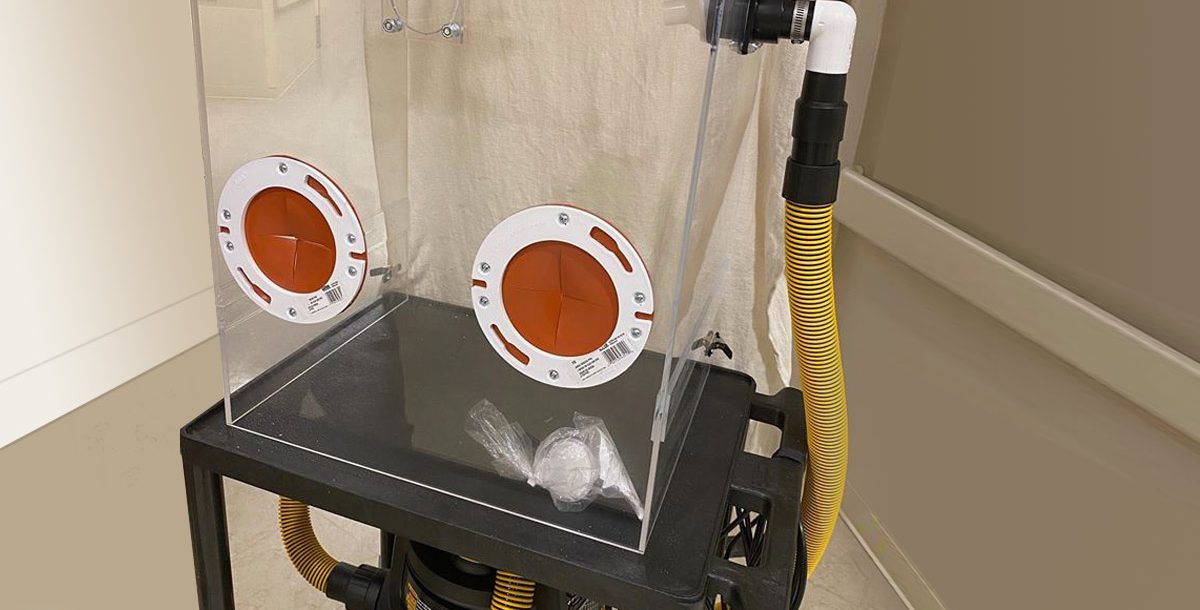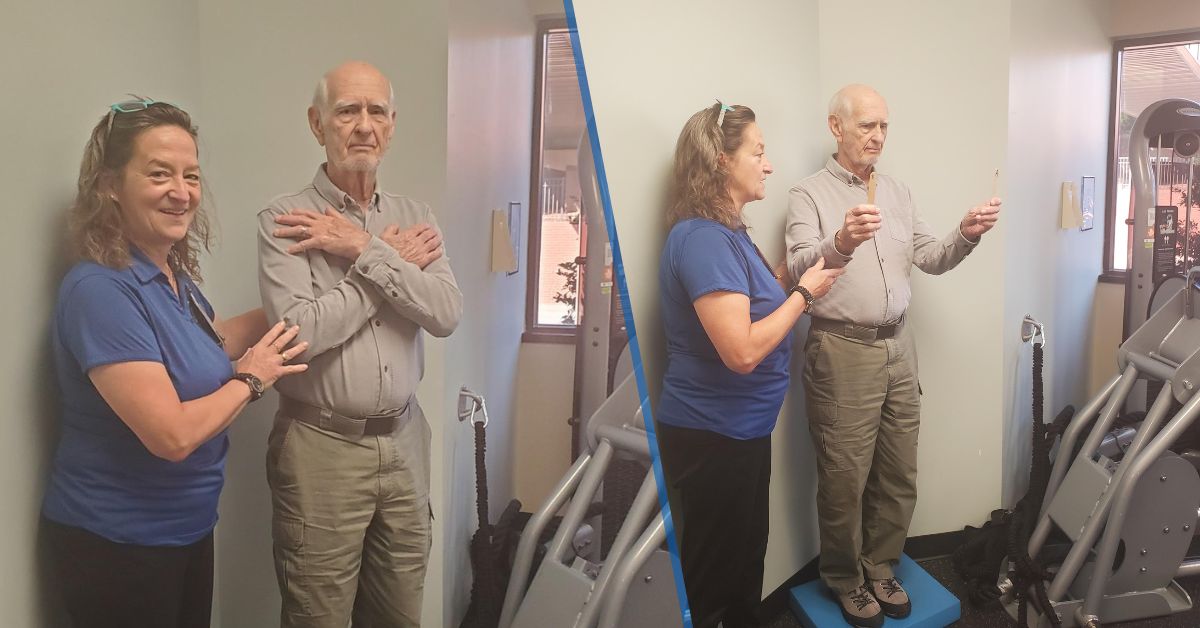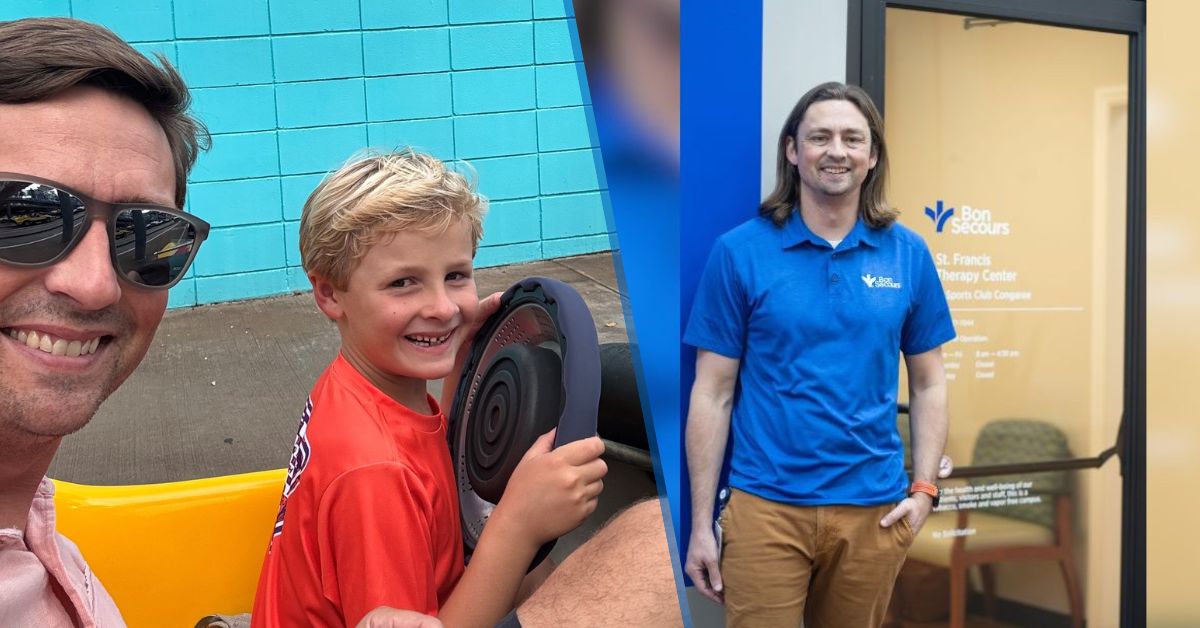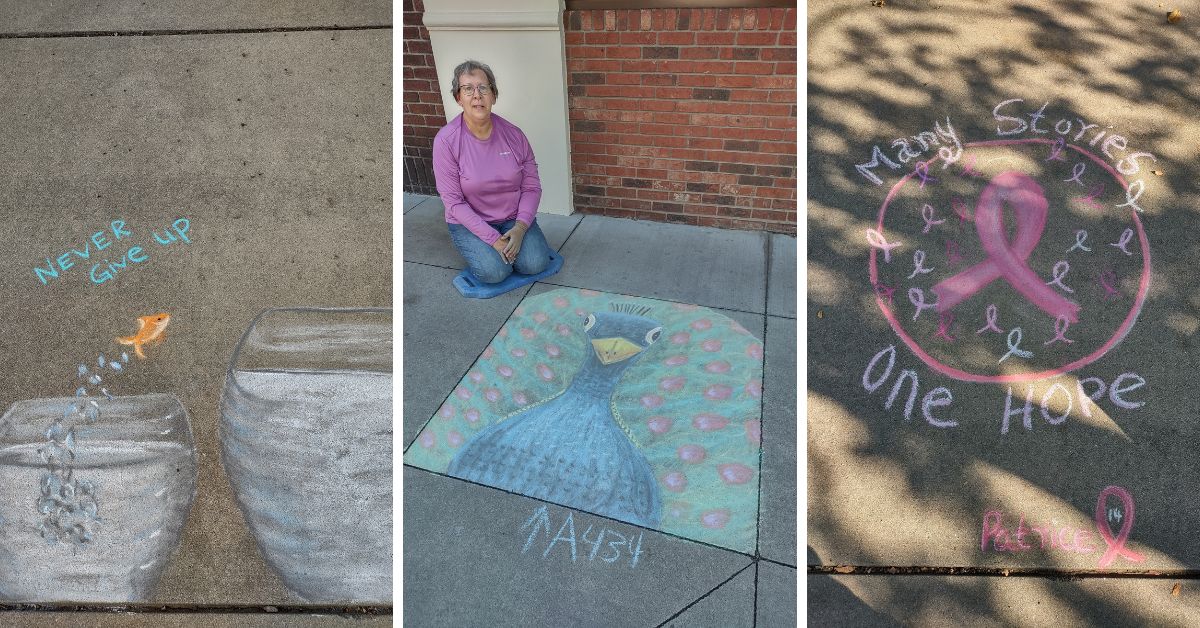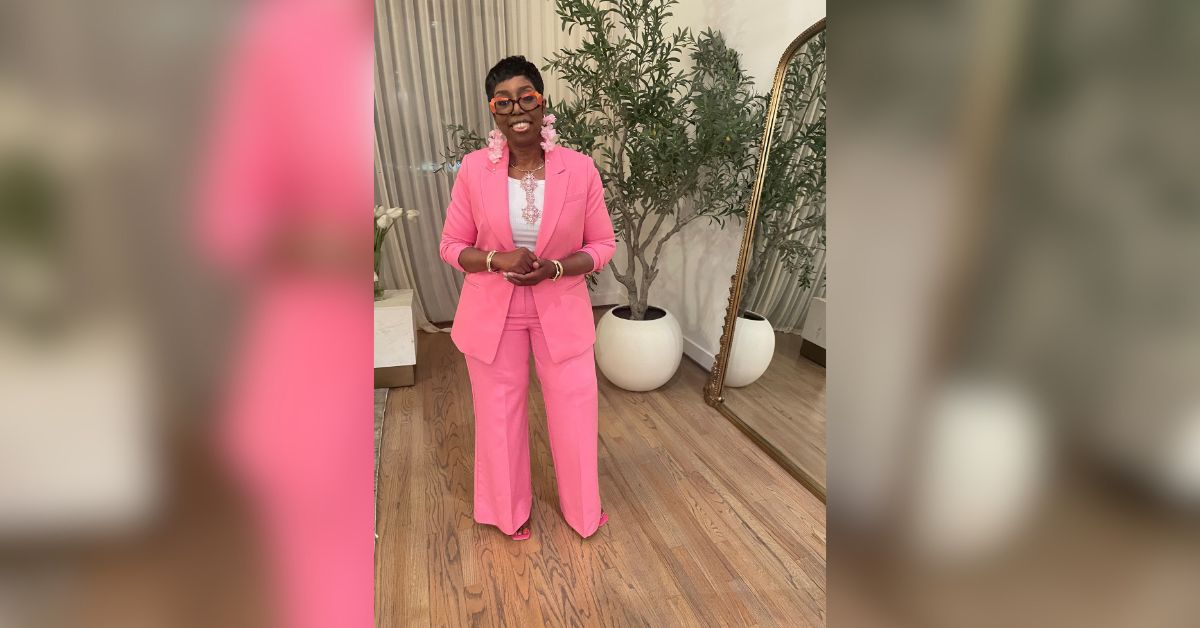Drastic times call for creative measures. With COVID-19 continuing to spread across our communities, it’s important to ensure our hospital remains a safe place. This way our health care professionals can continue providing compassionate care.
The engineering team at Bon Secours St. Francis Health System developed the negative pressure intubation box to reduce exposure to COVID-19. While it is modeled after a design created by a physician overseas, our engineers added an important filtration system.
Check out this Q&A with David M. Walsh, CHFM, Director, Facilities Engineering, and learn how his team came up with this new idea.
Q: When did your engineering team learn about the intubation box?
A: We first learned about an intubation box in late March from an article out of Wuhan, China. It was essentially a shield to protect workers that have to hover directly over the patient’s face during the intubation process.
The box was a simple design but had no pressure control. We immediately put some of the boxes into production and even went through a few early modifications. At this point however, there was no design or concept for a negative pressure box.
One of the biggest concerns for the frontline worker are certain procedures, like intubation, that essentially turns the virus airborne. While the shield concept greatly reduced the likelihood for transmission, making the box negative pressure would be the only way to eliminate that risk, at least the airborne risk.
Q: How did your team research designs for a negative pressure intubation box?
A: Zach Bryant, our plant operator at Eastside, was the mastermind behind the idea; he’s an innovative thinker. He searched the internet and to his surprise found nothing on a negative pressure intubation box. He then came up with the design from scratch.
Q: What made the engineers decide to add a filtration system?
A: HEPA filters have been deemed effective in trapping COVID-19 molecules. Zach’s design incorporates two HEPA filters, one inside the box that is disposed of after each patient and one inside the vacuum.
Q: How many engineers worked on this project and how long did it take?
A: Zach pretty much ran the whole thing. I was there to encourage and bounce ideas around with him but ultimately, he designed and built the entire box. He worked with APCO Plastics in Greenville, SC to fabricate the box and then he outfitted it with everything else. There were four prototypes made in total before he landed on the final design.
Q: How many boxes have been made so far? Is there a goal to make more?
A: There are currently six negative boxes, and that seems to be enough for now. Zach’s moved on to his next project, USB chargeable battery powered PAPR’s (respirators).
Q: What else would you like the community to know about this project?
A: The reaction we received from our OR staff was priceless. You would’ve thought we brought out the secret weapon when we rolled the first one in. You can really tell the intubating and extubating procedures are one of the scariest things the caregivers have to do right now. Being able to provide them with such relief and hearing it from them first hand meant a lot.
Several people mentioned that we should patent the box. However, Zach asked that I instead share it with the other local hospitals, which we did. We also passed the idea along to our corporate facilities team who shared the information with our other facilities.
Stay updated on what Bon Secours is doing related to COVID-19.

